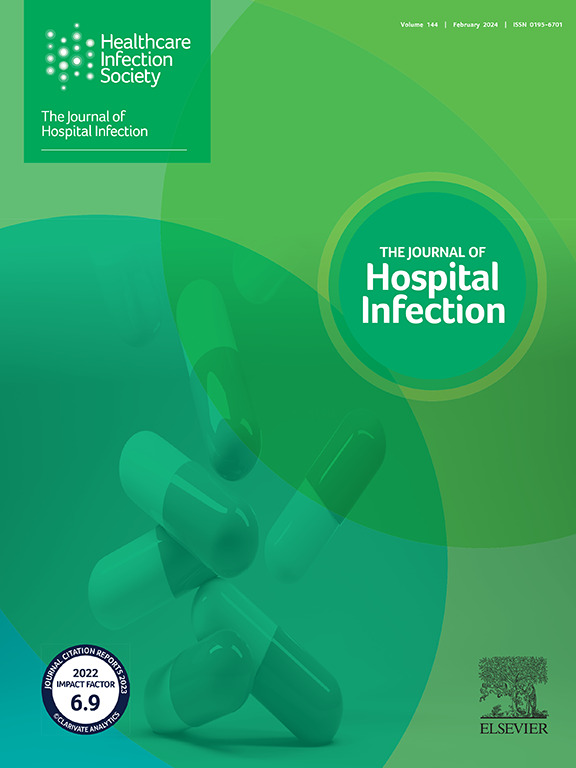Successful implementation of a bundle to prevent increased excessive-spectrum antimicrobial use under new EUCAST susceptibility definitions: a quasi-experimental study in a tertiary hospital
IF 3.9
3区 医学
Q1 INFECTIOUS DISEASES
引用次数: 0
Abstract
Background
This study evaluated the effectiveness of an implementation-bundle to prevent increased targeted excessive-spectrum antibiotics for wild-type Pseudomonas aeruginosa (PA) infections, following the introduction of 2019 EUCAST susceptibility categories redefinition.
Methods
This was a single-centre, quasi-experimental study at a tertiary University Hospital. All consecutive adult patients with wild-type PA infections between July 2023 and April 2024 were included and analysed across three-month periods: before the EUCAST update (Period 1), after the update with audit-feedback (Period 2), and after the update without audit-feedback (Period 3). The implementation-bundle included: (1) in-person educational sessions before the introduction of the redefinition; and (2) in antimicrobial susceptibility reports, replacing ‘I’ with ‘SE’, with a clarifying footnote and dosing information. An audit-feedback intervention was conducted during the first three months after the introduction of the redefinition. Selective reporting of antimicrobial susceptibility testing results was already in place in our hospital. Primary outcomes included targeted meropenem, and ceftolozane/tazobactam prescriptions; secondary outcomes were optimal anti-pseudomonal dosing and infectious diseases (IDs) consultations.
Findings
Among 158 patients (55 Period 1, 60 Period 2, 43 Period 3), targeted meropenem prescriptions did not increase (7.3% vs 6.7% (P=0.898) vs 0% (P=0.071)). No patients received targeted ceftolozane/tazobactam. ID consultations decreased (56.4% vs 38.3% (P=0.053) vs 34.9% (P=0.034)) and correct anti-pseudomonal dosing improved (70.9% vs 93.3% (P=0.002) vs 95.3% (P=0.002)). Risk factors for targeted meropenem prescriptions included age <65 years, immunosuppression, septic shock, intensive care unit admission, and empirical excessive-spectrum antimicrobial use.
Conclusion
This implementation-bundle enabled the introduction of EUCAST susceptibility categories redefinition without increasing targeted excessive-spectrum antibiotics or ID consultations, while optimizing dosing.
在新的EUCAST药敏定义下,成功实施一揽子措施以防止过度使用抗菌药物:一项三级医院的准实验研究
在引入2019年EUCAST易感类别重新定义后,研究评估了实施包预防野生型铜绿假单胞菌(PA)感染增加的靶向过谱抗生素的有效性。方法:在某三级大学附属医院进行单中心准实验研究。纳入2023年7月至2024年4月期间所有连续感染野生型PA的成年患者,并在三个月内进行分析:EUCAST更新之前(第1期),更新后审计反馈(第2期)和更新后没有审计反馈(第3期)。实施包包括:1)引入重新定义之前的面对面教育会议;2)在药敏报告中,将“I”替换为“SE”,并附有澄清性脚注和剂量信息。在引入重新定义后的头三个月进行了审计反馈干预。我院对抗菌药物敏感性试验结果已实行选择性报告制度。主要结局包括靶向美罗培南和头孢唑烷/他唑巴坦处方;次要结果是最佳抗假单胞菌剂量和传染病(ID)咨询。结果:158例患者(第1期55例,第2期60例,第3期43例)中,美罗培南靶向处方未增加(7.3% vs 6.7% [p=0.898] vs 0% [p=0.071])。没有患者接受靶向头孢唑烷/他唑巴坦治疗。就诊人数减少(56.4% vs 38.3% [p=0.053] vs 34.9% [p=0.034]),正确的抗假单胞菌剂量增加(70.9% vs 93.3% [p=0.002] vs 95.3% [p=0.002])。结论:该实施包能够引入EUCAST药敏类别重新定义,而不增加靶向过谱抗生素或ID咨询,同时优化剂量。
本文章由计算机程序翻译,如有差异,请以英文原文为准。
求助全文
约1分钟内获得全文
求助全文
来源期刊

Journal of Hospital Infection
医学-传染病学
CiteScore
12.70
自引率
5.80%
发文量
271
审稿时长
19 days
期刊介绍:
The Journal of Hospital Infection is the editorially independent scientific publication of the Healthcare Infection Society. The aim of the Journal is to publish high quality research and information relating to infection prevention and control that is relevant to an international audience.
The Journal welcomes submissions that relate to all aspects of infection prevention and control in healthcare settings. This includes submissions that:
provide new insight into the epidemiology, surveillance, or prevention and control of healthcare-associated infections and antimicrobial resistance in healthcare settings;
provide new insight into cleaning, disinfection and decontamination;
provide new insight into the design of healthcare premises;
describe novel aspects of outbreaks of infection;
throw light on techniques for effective antimicrobial stewardship;
describe novel techniques (laboratory-based or point of care) for the detection of infection or antimicrobial resistance in the healthcare setting, particularly if these can be used to facilitate infection prevention and control;
improve understanding of the motivations of safe healthcare behaviour, or describe techniques for achieving behavioural and cultural change;
improve understanding of the use of IT systems in infection surveillance and prevention and control.
 求助内容:
求助内容: 应助结果提醒方式:
应助结果提醒方式:


